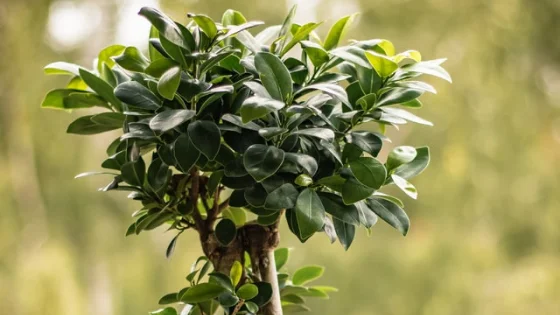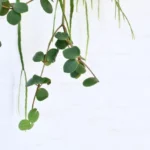Table of Contents
How to Plant and Care for your new Ficus Microcarpa
Ficus microcarpa is better known by many of its common names: Indian Laurel Fig, Chinese Banyan or Ficus Ginseng Tree. Part of the fig family, it is a tree millions of people see every day, as it is often grown as an ornamental tree in parks and gardens or in containers indoors as a part of Bonsai practices.
This tree is one of the most popular shade trees in the world and can be found on city streets worldwide. So, if you are a fan of Ficus microcarpa, or you just want to learn how to best plant and care for one, be sure to read on for our full guide below.
A brief history of Ficus microcarpa
Perhaps unsurprisingly for a plant with the common name Chinese Banyan, this tree has a native range that extends over much of China, through tropical Asia and even down to outlying Australian islands.
The tree has a history of use in traditional medicine throughout Asia where it has been found to help treat flu, malaria and bronchitis, and it also has anti-diabetic properties. The medicine is usually harvested from the tree’s roots, bark and leaves.
Ficus microcarpa has been one of the most popularly planted street trees in the last few centuries, it has seen widespread plantings on streets in temperate cities around the world.
This is because it produces a great canopy of large leaves and provides immense amounts of shade for its often-slender trunk. You can find Chinese Banyan on the streets of L.A., Japan, the Mediterranean and Northern Africa for example.
Ficus Ginseng Trees has fallen out of favor in recent years as they been found to have strong enough root systems to displace concrete sidewalks.
Typical Appearance
The typical appearance of Ficus microcarpa can be highly irregular for a tree. For example, it has been known to comfortably take root in spaces as small as a crack in pavement or a wall.
Chinese Banyan trees present irregular multi-trunked and stemmed trees that are evergreen in nature. They feature showy, dark-green, glossy, lanceolate shaped leaves. The trunk of the tree is smooth and regular.
When pollinated they are capable of creating fruit. Like most Ficus trees, its leaves are extremely fragile and prone to falling off if shaken or moved.
Planting your Ficus microcarpa
Planting your tree is simple if you keep the following four requirements in mind:
Light Requirements
Under the right conditions, Ficus microcarpa can be found in the upper canopy of rain forests. So it should come as no surprise that your Indian Laurel Fig will need full sun, or at least six hours of direct sunlight every day.
Keep in mind the following when considering your tree’s light requirements:
When you are growing Chinese Banyan trees indoors remember to place it in a window with maximum sun exposure.
Be prepared to supplement your plants natural amount of light with artificial grow lights if necessary.
When grown outdoors, Ficus macrocarpa will create space for shady undergrowth as it matures.
Temperature Requirements
As a tree native to tropical climates, you might think that Ficus microcarpa is horribly intolerant to cold, when actually it can handle a wide range of temperatures.
The tree does best outdoors when the temperature remains consistently above 68 degrees Fahrenheit, but it can actually handle cold snaps right down to freezing with little adverse long-term effect.
When grown indoors your tree will be most happy in a constant 65-75 degrees Fahrenheit range. It is important to note that the leaves on this ornamental tree are more fragile than most, so be sure to keep it out of any drafty areas to protect them.
Soil Requirements
Ficus microcarpa is notorious for its ability to thrive in substandard soil conditions. However, this doesn’t mean that it will survive if you really abuse it.
But in past studies the tree has shown an ability to grow in poor-quality soil even with toxins like lead or salt present.
With that in mind consider the following soil requirements when planting your tree:
The roots do not like to remain wet so work to ensure proper drainage of your soil.
Place gravel in the substrate before planting your tree to help the roots take hold. This can be as simple as a little kitty litter.
Any gritty to fine potting soil will do.
Once planted you will need to mulch over the roots.
Ficus microcarpa is a notoriously fast grower, it will be happy to be repotted to a larger vessel every two or three years.
Humidity Requirements
Ficus microcarpa is not terribly picky about humidity as long the temperature is correct.
However, the following are important things to consider when placing your tree.
Make sure when placing your plant indoors that it is not in a spot that is too drafty, damp or heated.
If your tree is in a drafty spot, it may be liable to dry out.
On the other hand, if you leave your tree in a damp or wet area of your house, you will most likely develop root rot or fungal growth.
Heat will dry out the soil of your plant, which can cause a myriad of issues.
The only reason you would want your tree in a high humidity situation is if you are trying to encourage the tree to sprout aerial roots. To do so try misting the surrounding area semi-frequently with water.
Caring for your Ficus microcarpa
How to Water
Your Ficus microcarpa should be watered regularly, which means a good soaking whenever you notice the soil has dried.
As a tropical tree it will require more water than most, though slightly less if being grown indoors, in which case it can be watered approximately twice ever one to two weeks.
How to Fertilize
Fertilization of your Ficus microcarpa will vary depending on the where it has been planted.
Indoors
When planted indoors your tree will require a mild liquid fertilizer or slow-release pellets on a monthly basis during the summer growth season.
If you can’t find fertilizer pellets, in a pinch, using spent coffee grounds can give your tree nutrients like nitrogen.
In the winter months you will not need to fertilize at all, though you can if you wish to possibly encourage further growth.
Outdoors
Fertilize your tree with an appropriate liquid fertilizer approximately every two weeks during growing season.
During winter months your tree will be dormant, however, in warmer climates it may not become cold enough for this to occur. In this case continuing to fertilize infrequently is okay.
Pruning
Ficus microcarpa is a fast-growing tree that requires a medium amount of pruning to maintain. If left to its own devices the tree can quickly produce off-shoots and has even been known to grow as an epiphyte on other trees.
This means that pruning should be undertaken as part of regular maintenance.
Here are some tips on pruning your tree:
When growing outdoors look for young suckers in the spring and remove them before they have a chance to mature and harden into more substantial branches.
If you are planning to saw off a larger branch: saw up only about an inch or two into the branch first and then down into this previous mark to ensure a clean cut that won’t get infected.
Indoors you will want to be careful with pruning your tree. Be sure to use clean and sharp tools and be conservative as it won’t grow back as quickly.
Limit indoor pruning to three times a year maximum for a young tree and five pruning sessions max for a mature Ficus.
Propagating your Ficus microcarpa
Propagating your plant is a relatively simple process that only requires taking a cutting and placing it in water or sterile soil to take root.
It is best to take a cutting off of a larger branch or in the spring from a naturally occurring offshoot. Place your cutting in room-temperature water in a warm part of the house.
Be sure to change the water frequently. Wait for it to put off roots before removing from the water and planting.
Extra Tips For Ficus Microcarpa Care
Pests & Diseases to be aware of
Ficus microcarpa has recently been found to be susceptible to a psyllid that causes its leaves to curl. Unfortunately the best management is vigilant scouting followed by manual removal of the pests and any effected parts of the tree including leaves or stems.
Other than the previous example, Chinese Banyan are hardy against most pestilence. For this reason, if your tree starts to look sickly, or its leaves have yellowed, it may be a case of overwatering.
Photo by SaiKrishna Saketh Yellapragada on Unsplash


